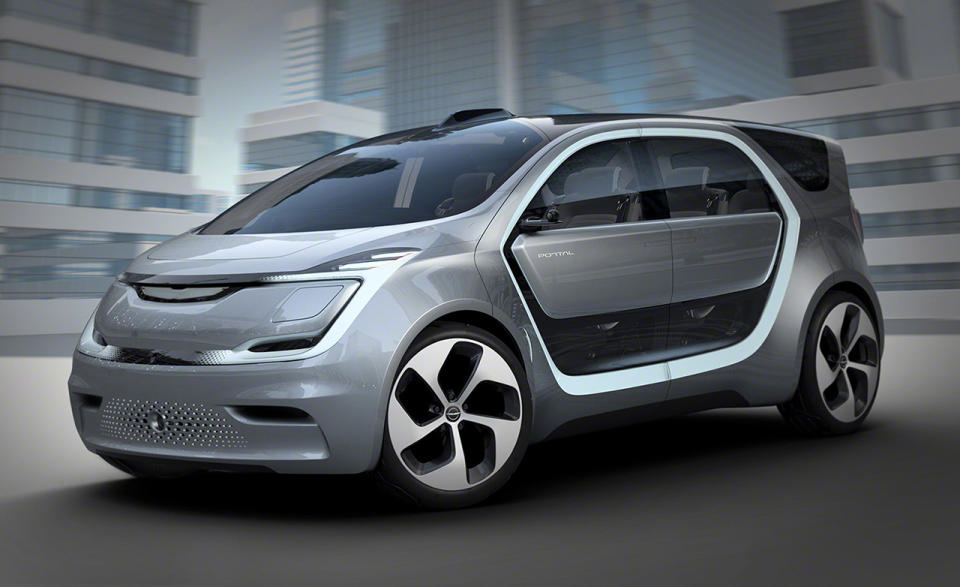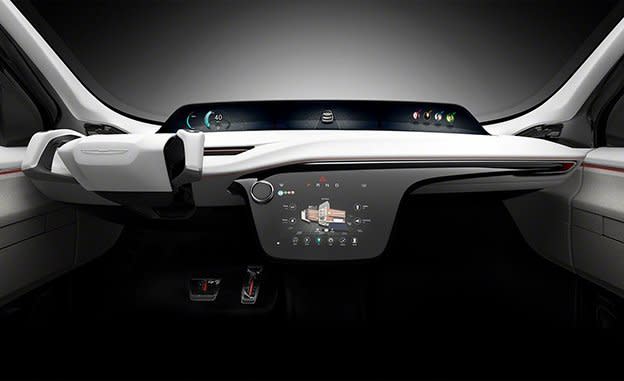Chrysler Portal Concept: Portending Chrysler's Possible Electric Minivan

“Created by millennials for millennials” may be the fairly lame rallying cry for Chrysler’s all-electric Portal minivan concept, but the brand’s CES show vehicle offers insights into a potential future product that goes beyond tired sops to the internet generation. Sure, the concept van is chock-full of thoughtful touches that millennials might find useful if they have kids to shuttle around. But we’re more interested in how this electric minivan, which is stuffed with fanciful features and semi-autonomous-driving technologies, factors into the rumor mill’s persistent bleating that Chrysler is working on an electric version of its real-life Pacifica minivan.
We like the Pacifica so much that we gave it a 10Best Trucks and SUVs award in the van category for 2017. We also are aware that Chrysler is not inclined to build far-out concept cars just for the sake of it, instead favoring show properties that preview future products more directly. The Portal concept making its debut at CES certainly doesn't look like any Pacifica minivan you can buy today, but its hardware seems viable.

Shades of Tesla
Under its wildly styled exterior, the Portal boasts of-the-moment electric powertrain tech. The front wheels are driven by an electric motor, details of which are unspecified, while a 100.0-kWh battery pack (that’s the same size as the top offering from Tesla) is housed in the cabin floor. The low-slung battery located underfloor is not new EV thinking—it's exactly how Tesla's Model S sedan and Model X crossover are laid out, as are Chevrolet's Bolt EV and Chrysler’s own Pacifica plug-in-hybrid minivan.
Chrysler claims that the big battery can deliver about 250 miles of driving range and that 350-kW DC fast-charging capability can restore roughly 150 miles of range in less than 20 minutes. Chrysler also fitted a charge indicator that’s integrated into the winged Chrysler badge on the Portal's nose. More significant, the Portal concept includes a new-to-Chrysler electrical architecture capable of juggling the powertrain's 800-volt system as well as 48- and 12-volt vehicle subsystems on the same network.

The Portal concept is slightly smaller than today's Pacifica, and we’re guessing the squatter proportions are intended to jazz up the typical minivan's two-box shape. The Portal’s wheelbase is shorter by 3.4 inches compared with the Pacifica’s, overall length is trimmed by 18.9 inches, and its height is 2.7 inches lower, yet overall width increases by 0.4 inch. Within that volume, Chrysler has packed a load of glitzy items clearly aimed at wowing show goers. Some are viable, such as the vehicle-to-vehicle (V2V) communication tech and SAE Level 3 autonomous-driving capability on the highway. With the Portal’s claimed suite of lidar, radar, sonar, and cameras—semi-autonomous gear that exists and is in use today (and is fitted to autonomous vehicles Chrysler has provided to Google’s Waymo project)—we would be surprised if similar capability weren’t in the works for Fiat Chrysler’s production vehicles.
Imagination Station
Among the less feasible but no less interesting features of the Portal are facial recognition and biometric scanning to tailor various memory settings to specific drivers, a communal screen for social-media-like “sharing” of content among passengers, and “zoned” audio that enables different passengers to listen to different music without headphones—not to mention the entire look of the interior and exterior. Will near-term Chrysler vehicles come with an aircraft-style steering yoke or a 3D AMOLED (Active Matrix Organic LED) display screen that spans the full width of the dashboard? Don’t bet on it. However, all of those bits surely will help the Portal cut through the noise at CES (formerly known as the Consumer Electronics Show), a venue increasingly targeted by automakers for future-think debuts. We couldn’t imagine a splashier way to tell consumers, and the rest of the industry, that Chrysler is getting serious about electrification than to follow up the plug-in-hybrid Pacifica with a fully electric van that pokes its nose at least partway through the door to the future.


 Yahoo Autos
Yahoo Autos 